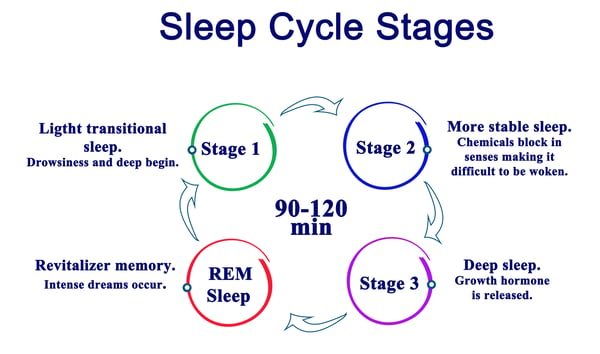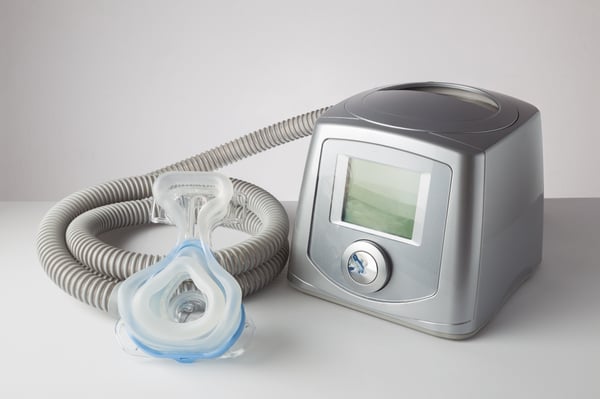
You may be recommended to do a sleep study by your doctor in order to see if you have more underlying conditions along with your respiratory condition.
This can be helpful to determine if a CPAP machine is required overnight, what setting your O2 should be at overnight, if you need O2 24/7 or if you have sleep apnea.
What is a Sleep Study?
A sleep study (or polysomnography) is an overnight exam that your doctor will perform to see your health throughout the night.
This can help diagnose sleep apnea, or other serious sleeping conditions.
It is often performed in a hospital or sleep center and will have you hooked up to monitors to measure your brain waves, heart, lungs, eye movement, oxygen levels in the blood, breathing rates, snoring, and body movements.
The room you stay in is made to be similar to a bedroom at home and will be dark enough for you to sleep successfully throughout the night.
You will often be required to show up 2 hours beforehand, but you’re allowed to bring your own pajamas and anything that will make you feel comfortable while sleeping (pillow, blanket, etc).
A technician will put sensors all over your body, but you should still have enough slack to move throughout the night.
You will still be able to use the bathroom in the middle of the night, and the technicians will be able to help you with all the cords.
If you sleep poorly that is okay, as the tests only need a short period of time to get the helpful information about your sleep.
There are two stages your brain goes through during sleep, one is non-rapid eye movement (NREM) and the other is rapid eye movement (REM).
NREM is actually the first 3 stages that we go through at night, while REM is the final stage in our sleep before we go back to stage 1.

NREM and REM alternate in cycles (between 4 and 6 cycles a night) lasting roughly 90 to 120 minutes.
Your REM cycle will get longer as the cycles progress throughout the night, but if you have a sleep disorder, you may not have a normal sleep cycle.
The results from your sleep study will be taken by a technician and then will be sent over to your doctor to evaluate the results.
It can take a few weeks for the results, and your doctor will often have you make another appointment to discuss the results.
Why Do I Need One?
Depending on your health, your doctor may recommend a sleep study to test your health overnight.
A sleep study can help diagnose disorders such as sleep apnea, periodic limb movement disorder, narcolepsy, restless legs syndrome, insomnia, sleepwalking, and REM sleep behavior disorder.
It can test if you are not getting enough oxygen at night and if you may need a CPAP to sleep with.
A sleep study will monitor your sleep stages and cycles to see if there is any issues or disruptions while you sleep.
Monitors hooked up to your head will be able to show if the NREM and REM cycles are normal, or if they get disrupted by something.
What Should I Expect?
A sleep study is a noninvasive test that is painless with minimal risk involved.
The largest risk is skin irritation that can be caused from the adhesive on the sensors.
Once you arrive for your sleep study, there will be a technician who will talk you through the process and bring you back to your room.
From there you will get comfortable and they will begin to hook you up to the machines by sensors and patches.
From there you are left to go to bed, and though it may be hard to sleep, a few hours of sleep should be enough for many of the tests.
In the morning they will come in to remove all sensors and patches and you are allowed to leave and go home.
You will most likely walk out with a scheduled appointment with your doctor for a couple weeks out.
Relevance of Results:
The results can give doctors an idea of your current health state while you sleep and help them better diagnose you.
Brain waves and eye movements can help your doctors assess your sleep stages and see if there are any disruptions in your sleep cycles.
Heart and breathing rate changes can also be observed and help diagnose sleep apnea.
Changes in blood oxygen can help doctors determine if you need CPAP or oxygen, or if you need to be put on oxygen for the first time.

Frequent leg movements can indicate periodic limb movement disorder or restless leg syndrome.
Unusual movements/behaviors while you sleep can indicate REM sleep behavior disorders.
Conclusion:
Sleep studies are nothing to be afraid of, as it is a noninvasive test that allows doctors to see how you sleep and what is disrupting your sleep.
You can require a sleep study for a variety of reasons, but the goal is to determine why you are unable to have a good nights rest.
Your doctor can explain your result once the data is processed and you will be able to understand what is causing you to have poor sleep.
This can hopefully find a solution to your sleep and a management plan to help you get better, more successful sleep.



